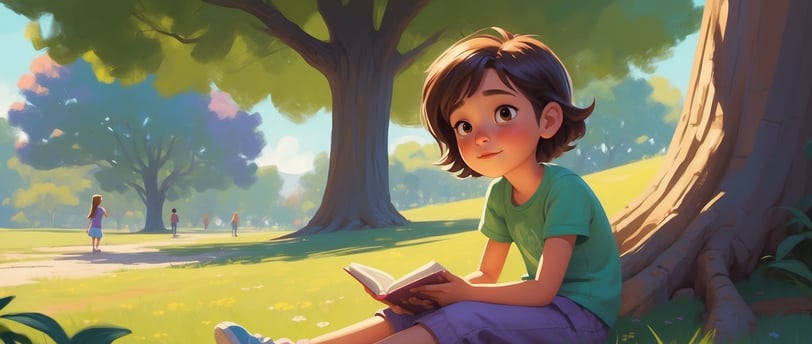What Makes a Good Story: Are Picture Books for Everyone?
What makes a good story, and why are picture books categorized as being “for kids”? Let’s examine this, shall we?
Mae Shell
9/7/20242 min read


Are the picture books I’m setting out to create for kids, or adults? The short answer is: Yes. Both.
The longer answer is: while it’s true that picture books are categorized as being for kids–and the most likely audience for one of these books is a young child being read to by an adult or an older child reading it to themself–I stand by my assertion that anyone of any age can get enjoyment from reading a well-written picture book.
Which begs the question: what makes a good picture book? And also, what is it about picture books that put them in the category of “this is for kids”?
Here are what a few of my favorite authors have to say in answer.
“You have to write the book that wants to be written. And if the book will be too difficult for grown-ups, then you write it for children.”
―Madeleine L'Engle
“I do not believe that I have ever written a children’s book. I don’t write for children. I write — and somebody says, ‘That’s for children!’.”
—Maurice Sendak
“A writer either speaks to adults and bores kids, or speaks to kids and upsets adults.”
—Ursula K. Le Guin
Well, then!
So, what might a kid have to say about this? Here are the three components of a good story, courtesy of my older child who is now a tween but came up with these when she was 6.
A problem.
A plot twist.
Interesting characters.
Well, then!
What else might go into creating a compelling, relatable picture book?
Although they are coaching about oral storytelling, the authors of How to Tell a Story (from The Moth, by Meg Bowles, Catherine Burns, Jennifer Hixson, Sarah Austin Jenness, and Kate Tellers) and Long Story Short (by Margot Leitman, a Moth grandslam champion) have some advice about stories that translate to creating picture books.
How to Tell a Story emphasizes telling stories that are true and have stakes: “A story needs action, and the action must have consequences. What is gained or lost? What is the urgency? What is the conflict? What is the goal and who or what is blocking it? How did the trip from Point A to Point B change or shape you?”
Similarly, Long Story Short advises telling about true experiences that reveal vulnerable moments, in a format that has a clear beginning, middle, and end. The best stories, Leitman says, contain universal themes that convince the listener “think that your life is just like theirs.”
For me, the fun and challenge of writing picture books is that I can tell true stories but don’t need to worry about replicating every exact detail as it happened. I can combine characters, condense timelines, and weave together things that I experienced as a kid or observed my kids experiencing. By fitting a universal theme into a short-form story that will (hopefully) resonate with readers, creating a picture book is the ultimate exercise in upcycling real life experiences.
My sincere objective and hope is to create stories that normalize kindness, self-respect, and overcoming challenges in a positive way. There is extraordinary wisdom to be gained even in the most ordinary of experiences, like going for a walk with a toddler or watching young kids create art.
In my next blog article I’ll talk about the similarities and differences of telling stories using two formats: picture books and haiku poems. In the meantime, drop a comment below on what you think about good stories and who is the audience for picture books.
